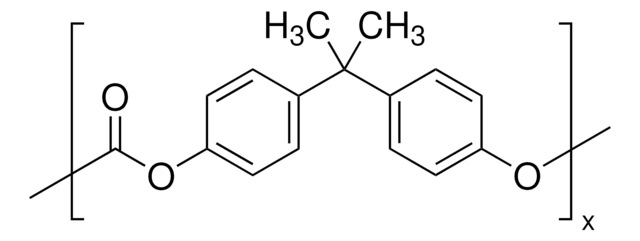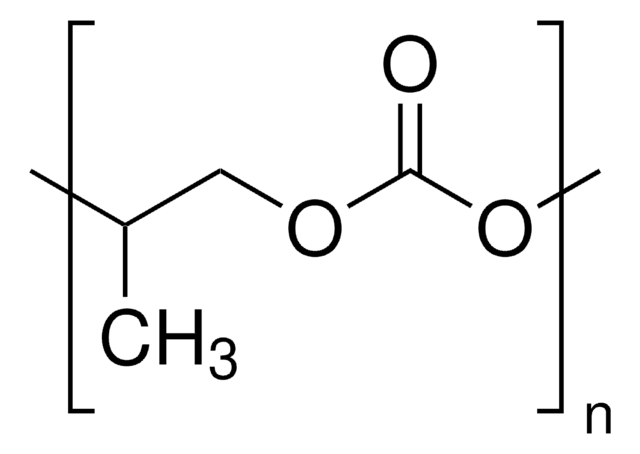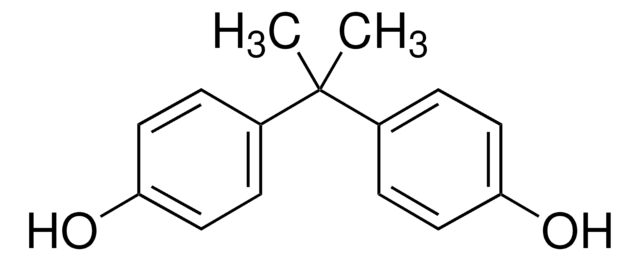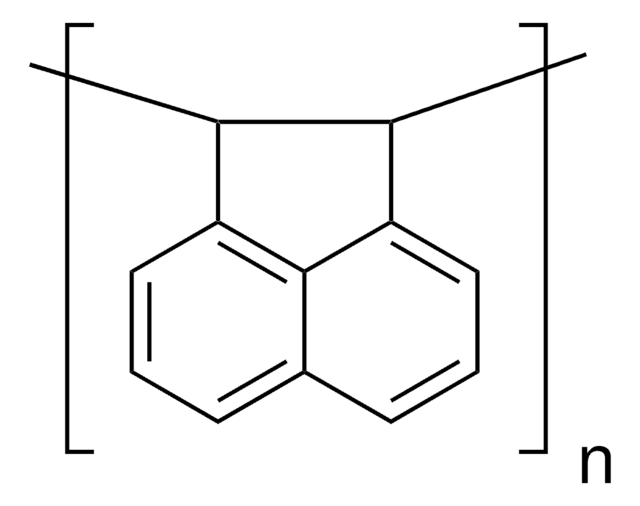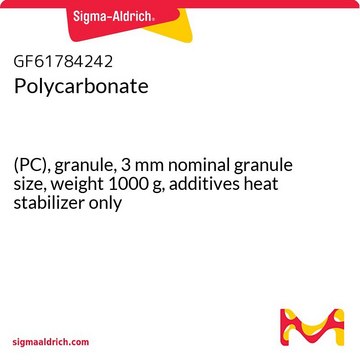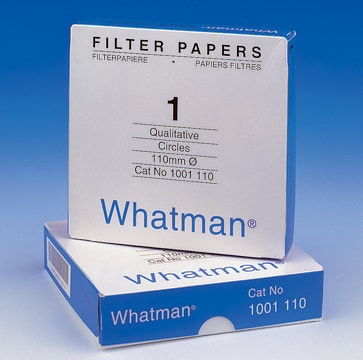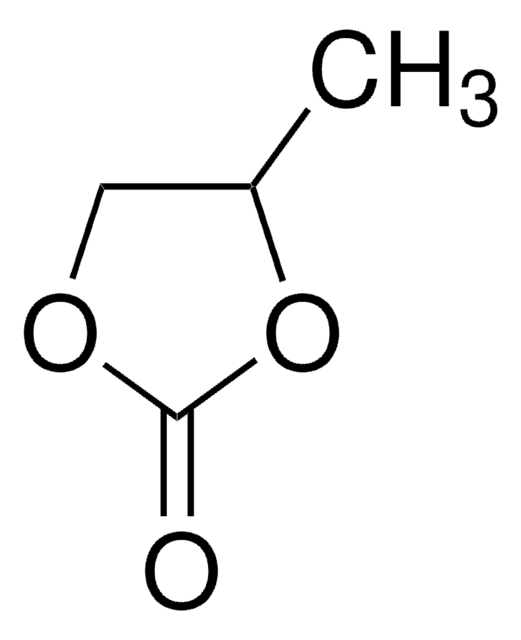181676
Poly(Bisphenol A carbonate)
About This Item
Produits recommandés
Poids mol.
average Mn 12,000-23,000 (typical)
average Mw 22,000-40,000 (typical)
Niveau de qualité
Technique(s)
gel permeation chromatography (GPC): suitable
Densité
1.2 g/mL at 25 °C (lit.)
Format
neat
Chaîne SMILES
CC(C)(c1ccc(O)cc1)c2ccc(O)cc2
InChI
1S/C15H16O2.CH2O3/c1-15(2,11-3-7-13(16)8-4-11)12-5-9-14(17)10-6-12;2-1(3)4/h3-10,16-17H,1-2H3;(H2,2,3,4)
Clé InChI
XSXWYGABGYBZRM-UHFFFAOYSA-N
Informations sur le gène
mouse ... Esr1(13982)
rat ... Ar(24208)
Vous recherchez des produits similaires ? Visite Guide de comparaison des produits
Catégories apparentées
Description générale
Application
Remarque sur l'analyse
Composants de kit seuls
- average Mw 23,000; average Mn 13,000 25 g
- average Mw 40,000; average Mn 21,000 25 g
- average Mw 31,000; average Mn 18,000 25 g
Code de la classe de stockage
11 - Combustible Solids
Classe de danger pour l'eau (WGK)
WGK 3
Point d'éclair (°F)
Not applicable
Point d'éclair (°C)
Not applicable
Équipement de protection individuelle
Eyeshields, Gloves, type N95 (US)
Faites votre choix parmi les versions les plus récentes :
Déjà en possession de ce produit ?
Retrouvez la documentation relative aux produits que vous avez récemment achetés dans la Bibliothèque de documents.
Les clients ont également consulté
Notre équipe de scientifiques dispose d'une expérience dans tous les secteurs de la recherche, notamment en sciences de la vie, science des matériaux, synthèse chimique, chromatographie, analyse et dans de nombreux autres domaines..
Contacter notre Service technique